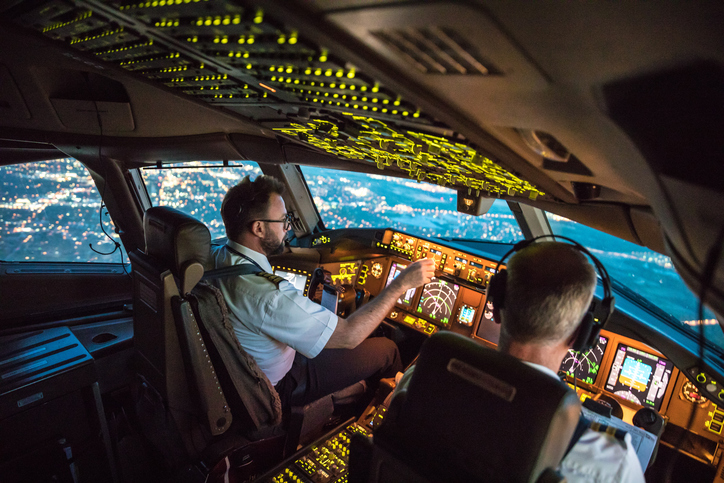In 2014, Danny Perna found himself caught up in the global shortage of pilots that has vexed airlines from China to the United States.
For the first time in 15 years, the founder of Epic Flight Academy in Florida couldn’t find enough trained U.S. pilots to be flight instructors at his school.
Offering sign-on bonuses of up to $10,000 did not help, he said. Eventually they decided to advertise a sponsorship programme to partially fund pilot cadets’ training.
“Basically once we started to fund training then it satisfied the pilot shortage,” he told Reuters by phone from Florida. Newly trained U.S. pilots are usually required to teach at flight schools to gain the hours needed to join an airline.
“So in our opinion it’s not a pilot shortage, it’s a funding or finance shortage, the inability for young people to be able to afford training.”
His realisation is hitting other airlines and flight schools too, as growing competition across the world for a shrinking pool of trained pilots pushes up salaries and prevents carriers from operating at full capacity.
Pilots say the burden on cadets to pay for their flight training, which can cost more than $70,000, has been a key reason why enrolment has plummeted at flight schools, especially in places like the U.S. and Australia. Many banks suspended loans for flight training after the 2008 financial crisis.
Many experienced pilots were also laid off at the time, which analysts said concealed how few new student pilots there were.
“Trainees now have to consider where the cash will come from, be it huge bank loans or turning to the ‘bank of mum and dad,'” said Brian Strutton, general secretary of British Airline Pilots Association, which has expressed concerns that the profession was becoming “inaccessible.”
In June, training company CAE Inc forecast that the global commercial aviation industry would need an additional 255,000 pilots by 2027 to sustain rapid growth, but said that more than half of the necessary pilots have not yet begun training.
“Many countries are in the same state (as the United States). They are having shortages in their military and in their commercial environment,” said Vietnam Airlines JSC’s chief executive, Duong Tri Thanh.
“The problem we see, and are spending investment on, is how you reduce the cost or the time of getting somebody qualified into a jet,” he added.
Paid to train
Carriers such as Air France have in recent months announced plans to launch so-called “ab initio” programs, in which airlines pay for training pilots, then hire them.
In October, Cebu Pacific said it would sponsor 240 aspiring aviators through a program through in which pilots would pay for their training later through salary deductions.
Lufthansa Aviation Training in October said it was dropping the cost of its two-year training programme to 80,000 euros ($98,080.00) from 100,000 euros.
“We see a growth in airline-sponsored programs, where graduates have line of sight to a job, from day one,” said Nick Leontidis, group president of civil aviation training solutions at CAE Inc. “Today, about 80 percent of our graduates are sponsored by an airline, where aspiring pilots are secured a job from day one.”
A spokesman for Air France said it its ab initio programme last operated 9 years ago. The airline plans to put about 100 cadets through the relaunched scheme by 2022.
Plane makers Boeing and Airbus said they were also expanding their range of flight training products and services to meet rising demand.
Boeing has more than 80 flight simulators operating worldwide, while Airbus has more than tripled the number of flight training centres it has globally in the last five years, the companies said.
Airbus is even looking to get into the ab initio game, said Laurent Martinez, the company’s head of services.
“We want to develop ab initio programmes in partnership so we can extend our training capabilities from high school to a certified pilot,” he said. “We are developing this as we speak.”
No short-term answer
These efforts are not likely to help in the short term, however.
Many airlines are for example competing against deep-pocketed Chinese carriers who are hiring aggressively because of fleet expansion. Chinese airlines fully sponsor training for pilots from China and sign them to long-term contracts, but have not been able to keep up with demand.
Ryanair in September cancelled 20,000 flights after saying it had a shortage of standby pilots due to a mismanaged regulatory change. The pilot shortage has also caused an increased number of flight cancellations by regional Australian airlines.
Besides changing how aspiring pilots can obtain funding, flight schools also said that the cost of flight training and recruitment tactics deserved a rethinking.
“We have to be realistic in as far as the education standards and the expectations of students are changing. You are dealing with millennials” said Shannon Wells, managing director at Airlines of Tasmania which owns the Par-Avion Flight Training school in Hobart, Tasmania. “The recruitment strategy for aviation has to change a bit. I think it is still a bit stuck in the past in terms of learning techniques.”






